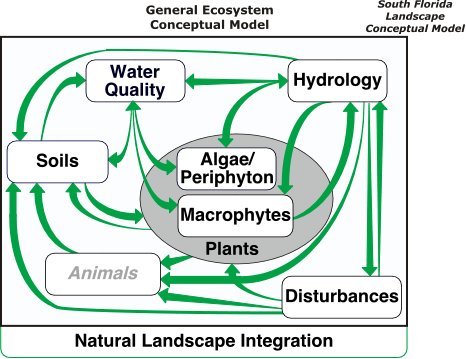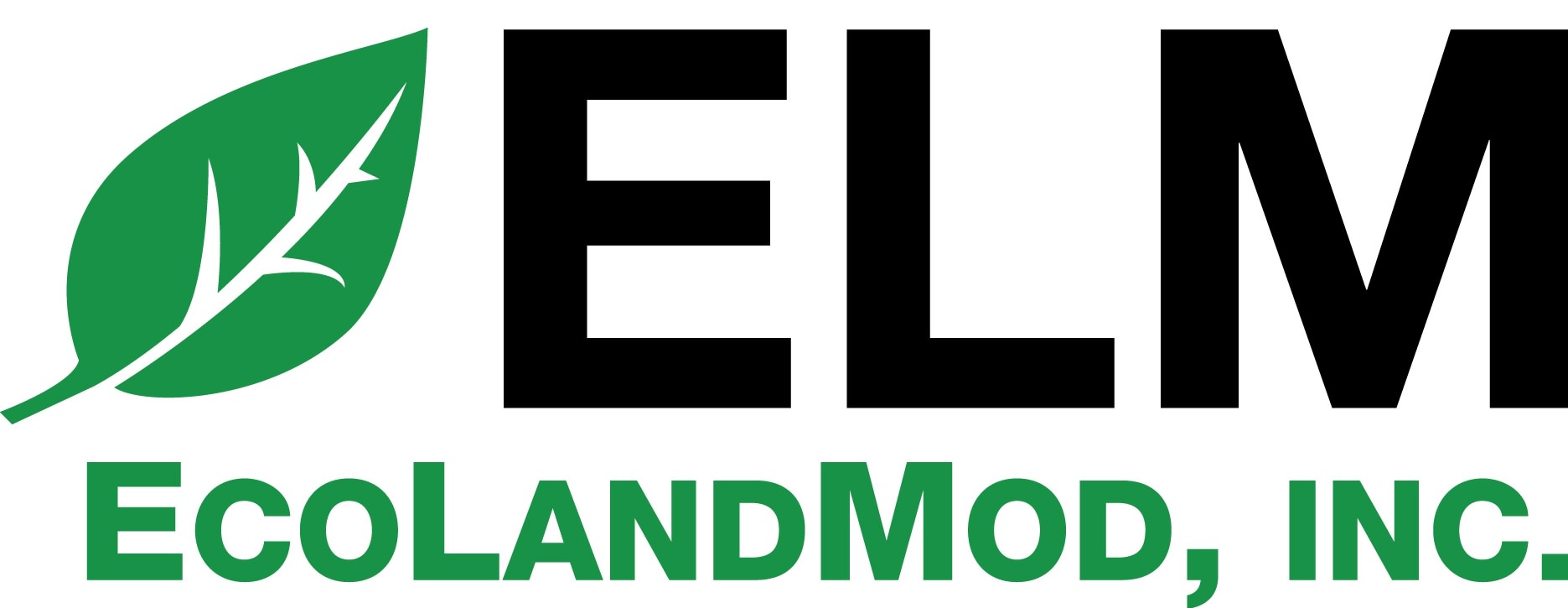![]() Background |
Models |
Projects |
Publications |
People |
News
Background |
Models |
Projects |
Publications |
People |
News
![]() Background |
Models |
Projects |
Publications |
People |
News
Background |
Models |
Projects |
Publications |
People |
News
Introduction
Wetlands & ecological models
Conceptual model: South Florida
Generic modeling framework

Disturbances such as fires, hurricanes, and severe drought or flooding can alter the ecological characteristics of the landscape over short and long time scales. There exists an important interaction between response to disturbances and the pre-existing structure and function of these dynamic ecosystems.
The primary disturbances considered in the current version of the Everglades Landscape Model are drought and flood conditions. The Everglades landscape has adapted to "expect" natural variability in climate and related disturbances. While droughts and fire may appear to decimate the landscape, most of the vegetation and animal communities of the region can respond in positive ways: fire occurring in relatively local "patches" at infrequent intervals can enhance the system by opening up new space or clearing away brush species amongst cypress or hardwood communities; hurricanes may flush accumulated organic debris from the shallows of Florida Bay.
However, there is potential danger in management regimes that exacerbate the natural response to disturbances. If the seasonality and frequency of disturbances are significantly altered, areas that remain overly dry during unusual periods can experience severe "muck" fires that burn deeply into the peat and eliminate more soil and vegetation than "surface" fires. Such fires can burn away the carbon in the soil, leaving elevated levels of phosphorus. Some macrophyte species such as nuisance cattail rapidly colonize and thrive in such a highly disturbed environment. Regions that have accumulated stresses such as long term nutrient loading can be "primed" for dramatic, potentially catastrophic shifts in the ecological balance.
 EcoLandMod Background
EcoLandMod Background